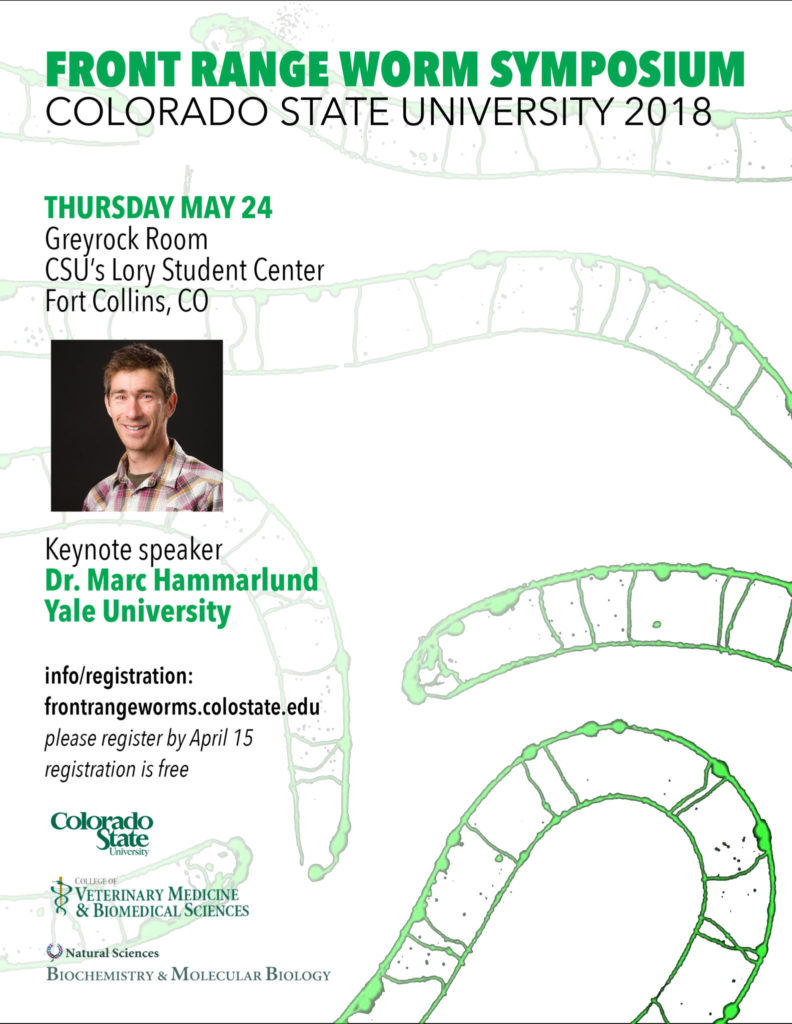 Colorado State University will host the upcoming 2018 Front Range Worm Symposium on May 24, where local and regional nematode scientists will have the opportunity to share their research, learn and socialize.
Colorado State University will host the upcoming 2018 Front Range Worm Symposium on May 24, where local and regional nematode scientists will have the opportunity to share their research, learn and socialize.
Front Range Worms is a community of scientists in Colorado and Wyoming who use the nematode worm to gain insight into biological questions. This organism is an ideal candidate for research in molecular biology, biochemistry, genetics, neurobiology, developmental biology and related fiends.
Nematode discovery begins here
CSU has emerged as a leading scientific hub for research in this field and has several faculty-run labs heavily involved in using the nematode Caenorhabditis elegans as a model system for exploring general biological principles. The Montgomery Lab, led by Tai Montgomery, assistant professor in the Department of Biology, examines the mechanisms of gene regulation through small RNAs. The Nishimura Lab, led by Erin Osborne Nishimura, assistant professor in the Department of Biochemistry and Molecular Biology, asks questions of developmental genomics. The Hoerndli Lab, led by Fred Hoerndli, assistant professor in the Department of Biomedical Sciences, focuses on the functions of the nervous system. In addition, the Wall Lab, led by biology professor Diana Wall, studies soil nematode ecology.
The event will take place starting 10 a.m. Thursday, May 24 in the Lory Student Center Greyrock Room. It will feature invited keynote speaker Marc Hammarlund of Yale University, who will share his research on regeneration, aging and signaling in C. elegans. Invited speaker Wen Chen, curator of WormBase, the online biological database for the nematode community, will be traveling to the event from the California Institute of Technology.
Those interested in attending the event must register by April 15. The symposium will be jointly sponsored by the Department of Biochemistry and Molecular Biology, the Department of Biomedical Sciences and the Montgomery and Nishimura labs.